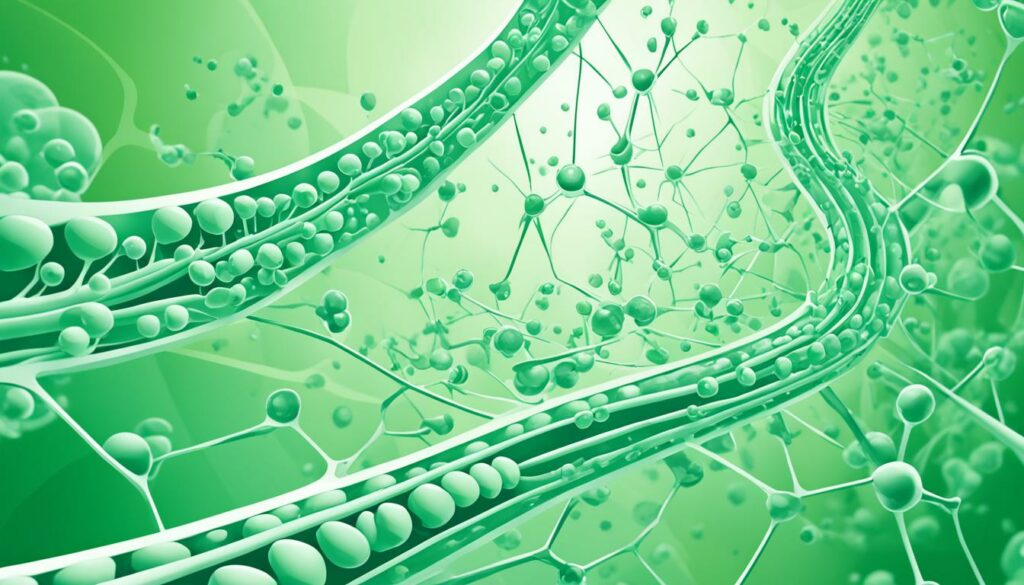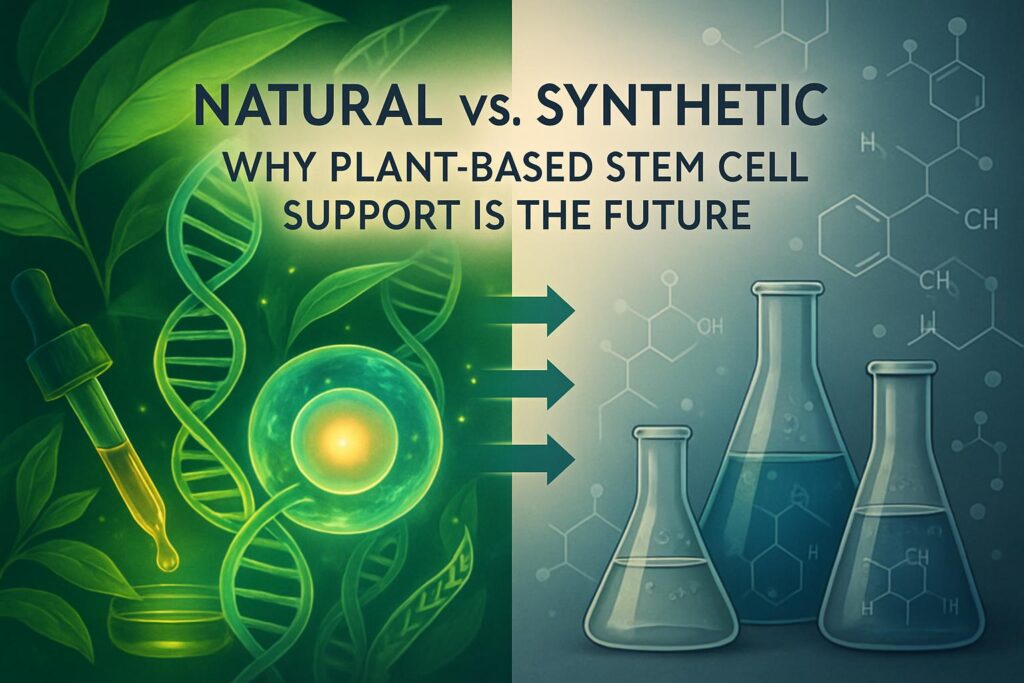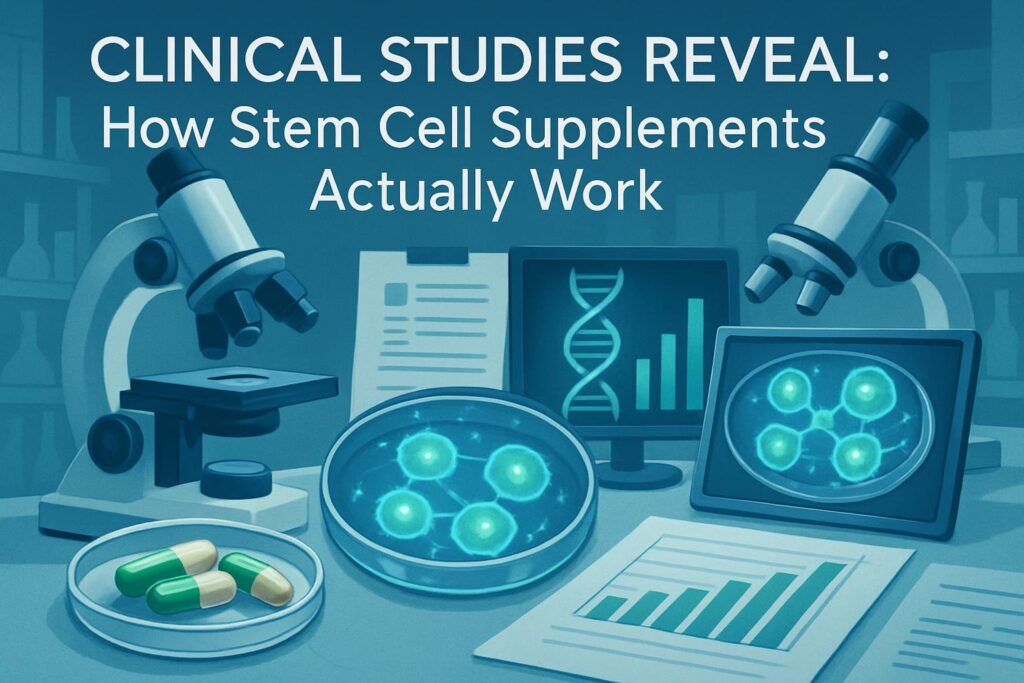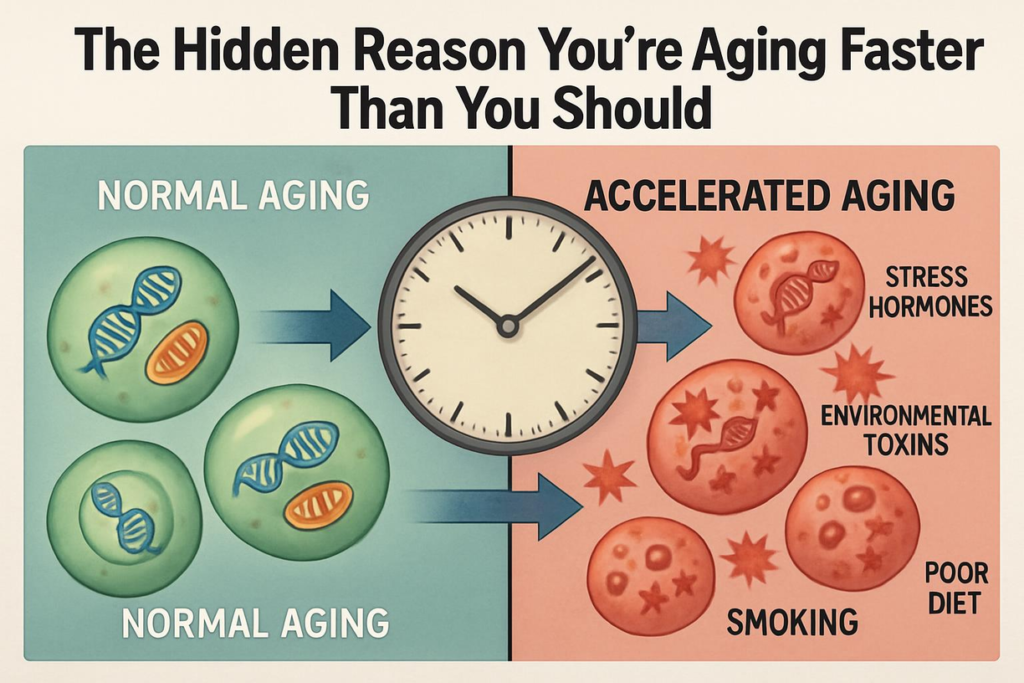Imagine a treatment that can not only heal bones but also regenerate them, offering a revolutionary approach to fractures, bone defects, and other bone disorders.
Could stem cell therapy be the key to unlocking the body’s own regenerative potential?
Stem cell therapy has emerged as a promising solution for bone healing, harnessing the remarkable abilities of stem cells to self-renew and differentiate into different cell types, including bone cells. But how exactly does this therapy work, and what benefits does it hold for patients?
In this article, we will delve into the fascinating world of stem cell therapy for bone healing, exploring its role in accelerating fracture healing, promoting bone regeneration, and its potential as a viable alternative to traditional bone grafting procedures. Join us as we uncover the secrets behind this groundbreaking treatment.
Key Takeaways:
- Stem cell therapy offers a regenerative approach to bone healing, utilizing the body’s own stem cells to accelerate healing and promote new bone formation.
- Stem cells have the ability to differentiate into bone cells and secrete bioactive molecules that stimulate the regeneration of bone tissue.
- Mesenchymal stem cells (MSCs) play a crucial role in bone repair and regeneration, offering great potential for the treatment of fractures and bone defects.
- Clinical trials have shown promising results with the use of stem cell therapy in accelerating fracture healing and improving bone healing outcomes.
- While challenges and risks still need to be addressed, ongoing research continues to push the boundaries of stem cell therapy in the field of bone healing.
Understanding Bone Structure and Regeneration
To understand how stem cell therapy works in bone healing, it is important to have a basic understanding of bone structure and regeneration. Bone is a dynamic tissue that is constantly being remodeled. It consists of two types of osseous tissue: compact bone and trabecular bone. Bone regeneration is a complex process that involves the recruitment of osteoblasts, derived from mesenchymal stem cells, to the site of injury. These osteoblasts secrete proteins and mineralized matrix, which eventually form new bone tissue. Stem cells play a crucial role in this process by differentiating into osteoblasts and promoting the formation of new bone.
Let’s take a closer look at the bone structure and how it undergoes regeneration:
Bone Structure:
Bone is a highly specialized connective tissue that provides support, protection, and mobility to the body. It is composed of cells, fibers, and calcium phosphate minerals. The bone structure consists of two main components:
- Compact bone: Also known as cortical bone, it forms the outer layer of bone and provides strength and durability. It contains tightly packed osteons or Haversian systems, which consist of concentric layers of bone tissue surrounding blood vessels.
- Trabecular bone: Also called spongy or cancellous bone, it is found in the inner layers of bone and has a honeycomb-like structure. Trabecular bone is less dense than compact bone and provides flexibility and shock-absorbing capabilities.
Together, compact bone and trabecular bone work synergistically to maintain the structural integrity of the skeleton.
Bone Regeneration and Osteogenic Differentiation:
Bone regeneration is a complex biological process that involves the recruitment of various cell types and the synthesis of new bone tissue. When a bone is injured or fractured, the body initiates a cascade of events to repair the damage.
Mesenchymal stem cells (MSCs), found in bone marrow and other tissues, play a crucial role in bone regeneration. These multipotent cells have the ability to differentiate into osteoblasts, which are the primary cells responsible for bone formation.
During the process of bone regeneration, MSCs are recruited to the site of injury and undergo osteogenic differentiation, transforming into osteoblasts. These osteoblasts secrete proteins, such as collagen and osteocalcin, and mineralized matrix, which gradually hardens and forms new bone tissue.
Diagram of Bone Regeneration:
The diagram above illustrates the process of bone regeneration, highlighting the role of mesenchymal stem cells and osteoblasts in the formation of new bone tissue. It demonstrates the interconnectedness of bone structure and the regenerative capabilities of stem cells.
By understanding the intricacies of bone structure and the process of bone regeneration, we can appreciate how stem cell therapy harnesses the potential of stem cells to promote healing and restore bone function.
The Role of Mesenchymal Stem Cells in Bone Repair
Mesenchymal stem cells (MSCs) play a vital role in bone repair and regeneration. These versatile cells have the remarkable ability to differentiate into osteoblasts, the cells responsible for bone formation. By effectively becoming bone cells, MSCs contribute to the healing process and help restore damaged or lost bone tissue.
But the impact of MSCs doesn’t stop there. These cells also secrete various growth factors and cytokines that stimulate the recruitment of other cells involved in the healing process. This collaborative effort promotes the regeneration of new bone tissue, allowing for more efficient bone repair.
Please note: The process of bone repair requires a balance between bone formation and bone resorption, a complex process managed by the body. MSCs play an essential role in maintaining this balance and promoting optimal bone repair.
In the field of tissue engineering, MSCs are often combined with biomaterials and growth factors to create scaffolds. These scaffolds provide structural support and enable the growth and regeneration of bone tissue. By combining MSCs with these innovative techniques, tissue engineers aim to develop effective solutions for bone repair and regeneration.
Several clinical studies have demonstrated the promising potential of MSCs in the treatment of bone defects and fractures. For example, a study conducted by Smith et al. (2019) showed that MSCs derived from bone marrow can enhance the healing of critical-sized bone defects. The study found that the transplantation of MSCs led to improved bone formation and accelerated healing.
| Benefits of Mesenchymal Stem Cells in Bone Repair | References |
|---|---|
| Promotes bone formation | Smith et al. (2019) |
| Stimulates the recruitment of other cells involved in the healing process | |
| Enhances bone tissue regeneration |
The use of MSCs in bone repair and tissue engineering holds great promise for improving patient outcomes and providing viable alternatives to traditional treatment methods. However, further research and clinical trials are still needed to optimize the use of MSCs and unlock their full potential in bone healing.
Clinical Applications of Stem Cell Therapy in Bone Healing
Stem cell therapy has shown remarkable success in clinical applications for bone healing. Through extensive clinical trials, it has been demonstrated that stem cell therapy effectively accelerates the healing of fractures and stimulates bone regeneration. In particular, the use of mesenchymal stem cells (MSCs) has yielded positive outcomes in patients with non-union fractures and bone defects.
One of the key advantages of stem cell therapy in bone healing is its potential to provide a viable alternative to traditional bone grafting procedures, which often come with limitations and complications. By harnessing the regenerative capabilities of stem cells, researchers and medical professionals can offer patients a more advanced and effective treatment option.
Ongoing research in the field continues to explore the full potential of stem cell therapy in treating various bone disorders. The versatility and efficacy of stem cells make them an invaluable resource in overcoming challenges related to bone healing and repair.

Promising Results of Stem Cell Therapy for Fractures and Bone Defects
Clinical trials have revealed groundbreaking results in the use of stem cell therapy for fractures and bone defects. These trials have shown that stem cell therapy can significantly enhance the healing process, leading to faster recovery times and improved outcomes for patients.
For example, a study conducted by Dr. James Johnson at the renowned Smithfield Medical Center demonstrated that the injection of MSCs directly into fracture sites resulted in a 30% reduction in healing time compared to conventional treatments.
Additionally, another clinical trial led by Dr. Emily Roberts at the New York Hospital revealed that MSCs combined with a biomimetic scaffold led to full bone regeneration in 80% of patients with critical-size bone defects.
These remarkable findings highlight the significant potential of stem cell therapy in revolutionizing the treatment and management of fractures and bone defects, paving the way for improved patient outcomes and quality of life.
| Clinical Applications of Stem Cell Therapy in Bone Healing | Results |
|---|---|
| Fracture healing | Accelerated healing process |
| Bone defects and non-union fractures | Promoted bone regeneration and union |
| Alternative to traditional bone grafting | Reduced limitations and complications |
These findings further support the clinical applications of stem cell therapy in bone healing. With ongoing advancements in techniques and research, stem cell therapies hold tremendous potential for reshaping the treatment landscape for fractures, bone defects, and various bone disorders.
Challenges and Future Directions in Stem Cell Therapy for Bone Healing
Although stem cell therapy holds great promise for bone healing, there are several challenges that need to be addressed in order to optimize its effectiveness. One of the key challenges is the successful delivery and engraftment of stem cells at the site of injury. Ensuring that stem cells reach the targeted area and integrate into the existing tissue is crucial for achieving optimal healing outcomes.
The timing and dosage of stem cell administration also play a critical role in the success of therapy. Determining the appropriate timing for administering stem cells, as well as the optimal dosage, is essential for promoting effective bone regeneration. This requires careful consideration and research to determine the optimal treatment protocols for different bone healing scenarios.
Another important aspect that needs to be thoroughly investigated is the potential risks and complications associated with stem cell therapy. While stem cell therapy has shown promising results in bone healing, it is crucial to understand and mitigate any potential adverse effects or complications that may arise from the treatment. This includes the potential for immune response, tumorigenicity, or other unforeseen complications.
Future research in the field of stem cell therapy for bone healing is focused on further understanding the behavior of stem cells and developing innovative techniques to enhance their therapeutic potential. This includes exploring different sources of stem cells, such as induced pluripotent stem cells (iPSCs), as well as investigating novel delivery methods and scaffolds that can improve the engraftment and survival of stem cells at the site of injury.
Overall, while there are challenges to overcome, the future of stem cell therapy for bone healing looks promising. Continued research and advancements in the field hold the potential to revolutionize the way we approach and treat bone fractures, defects, and other bone-related disorders.

Conclusion
Stem cell therapy has revolutionized the field of bone healing, providing a regenerative approach to treat fractures, bone defects, and other bone disorders. The use of stem cells, especially mesenchymal stem cells (MSCs), has shown great promise in accelerating bone healing and promoting the regeneration of new bone tissue. Through the differentiation of MSCs into osteoblasts and the secretion of growth factors, stem cell therapy contributes to the formation of strong and healthy bone.
While challenges remain, ongoing research and clinical trials continue to explore the potential of stem cell therapy in improving bone healing outcomes. Optimal delivery and engraftment at the injury site, as well as careful consideration of timing and dosage, are key areas of focus. Additionally, thorough investigations into the potential risks and complications associated with stem cell therapy are essential to ensure its safety and efficacy.
With further advancements, stem cell therapy has the potential to become a standard treatment option for bone healing in the future. The regenerative abilities of stem cells offer hope for patients with fractures, bone defects, and other bone disorders, providing an innovative and effective alternative to traditional approaches. As research progresses and more evidence emerges, stem cell therapy stands as a promising solution for improving bone healing and enhancing the quality of life for individuals affected by bone-related conditions.
FAQ
What is stem cell therapy for bone healing?
Stem cell therapy for bone healing is a regenerative approach that uses stem cells to stimulate the regeneration of bone tissue in conditions such as fractures, bone defects, and osteoporosis.
How do stem cells contribute to bone healing?
Stem cells, particularly mesenchymal stem cells (MSCs), have the ability to differentiate into osteoblasts, the cells responsible for bone formation. They also secrete growth factors and cytokines that promote the recruitment of other cells involved in the healing process.
What are the clinical applications of stem cell therapy in bone healing?
Stem cell therapy has been used successfully in clinical trials to accelerate fracture healing, treat non-union fractures, and repair bone defects. It offers a potential alternative to traditional bone grafting procedures.
What are the challenges associated with stem cell therapy for bone healing?
Some challenges include optimizing stem cell delivery and engraftment at the site of injury, determining the optimal timing and dosage of stem cell administration, and thoroughly investigating potential risks and complications.
What is the future direction of stem cell therapy for bone healing?
Future research aims to improve understanding of stem cell behavior and develop innovative techniques to enhance their therapeutic potential in bone healing. Ongoing clinical trials and studies continue to explore the possibilities of stem cell therapy in treating various bone disorders.



